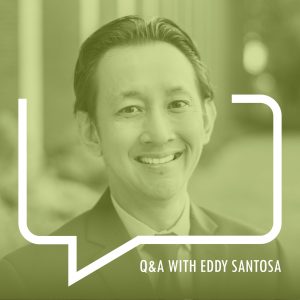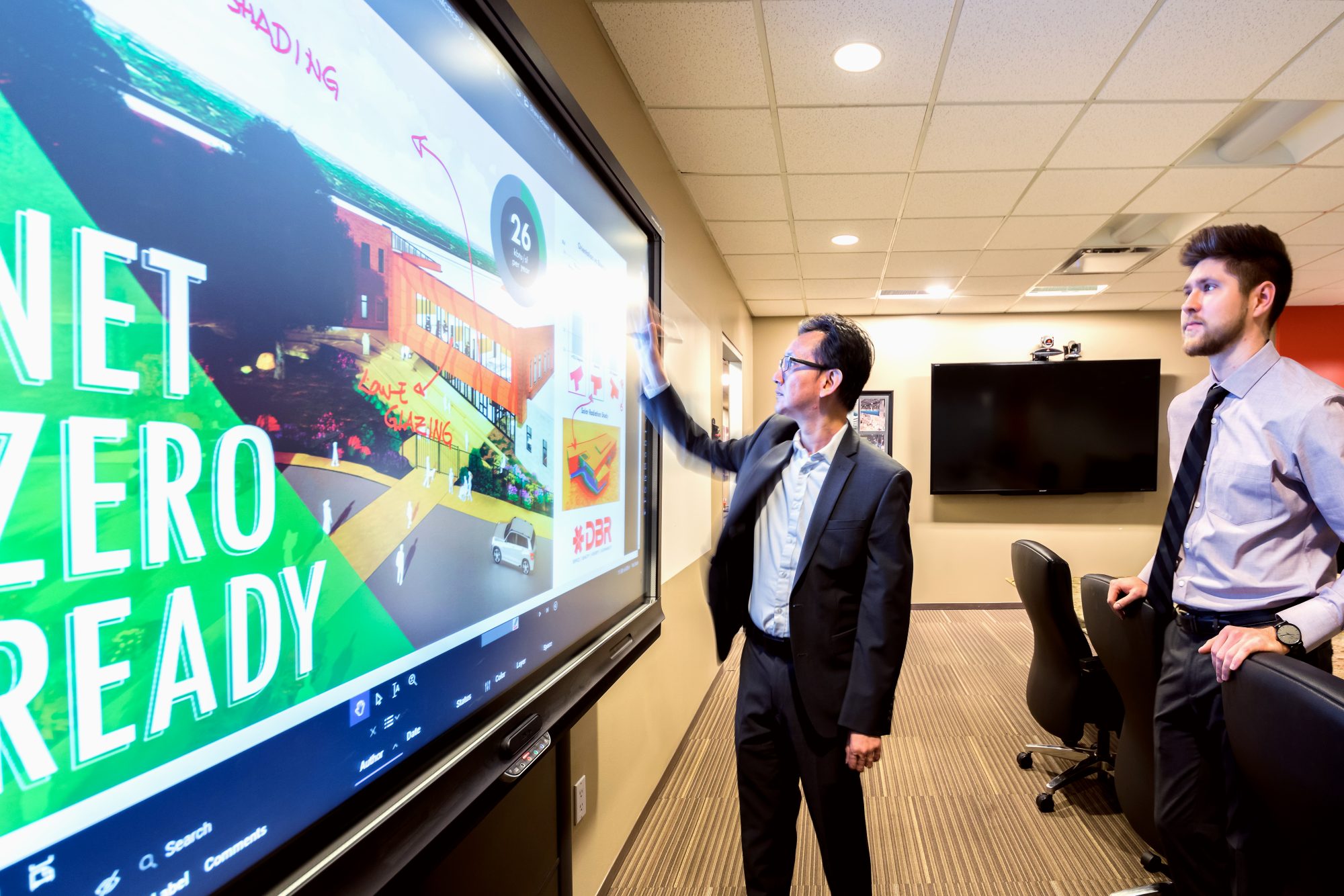
Eddy Santosa
AIA, CBCP, LEED AP BD+C, BEMP
Eddy serves as the Director of Sustainability at DBR and supports the firm statewide. With over fifteen years of experience practicing sustainable design in the A/E/C industry Eddy has been involved in establishing sustainable design strategies, energy conservation strategies, and passive design analyses for projects in the US and around the world. His works range from developing master plans and conceptual design strategies for net zero projects to providing project management and energy simulation calculations for LEED certifications.
Eddy is also a USGBC Energy and Atmosphere Technical Advisory Group Member, a BEMwiki Editor at IBPSA US, and USGBC pro reviewer. His works have been widely published in articles, books, and research journals. He is a frequent speaker and has spoken at many conferences including Greenbuild, ASHRAE conferences, IBPSA conference, and Autodesk University. His primary interest area is integrated design and the implementation of building performance assessments, especially daylight and energy performance, in the early design stages.
Q&A with Eddy:
Q: How do we design a net zero energy building?
A: We start the design by implementing passive strategies and improving building systems in order for the building energy usage to be as low as possible before applying photovoltaics or other on-site renewable energy options. Typically, passive energy conservation measures and those involving building systems, such as lighting, HVAC, and controls, have a shorter payback period than utilizing on-site renewables. So it is often preferred to minimize the building energy use before installing photovoltaics or other strategies for on-site power generation. Buildings that have ultra-low energy usage but do not utilize photovoltaics are referred to as “Net Zero Ready Buildings”. Additionally, a true net zero building must use electrical energy, because natural gas cannot be offset or generated onsite. This process is called “electrification.”
Q: Should we pursue LEED or just implement best practices?
A: In my experience working with many different architecture and engineering firms, pursuing LEED is always the best choice. While designing “LEED-like” sounds good, in reality many design teams do not put forth the effort to verify that their projects are actually capable of achieving the desired outcomes. Therefore, even when the design follows best practices and endeavors to deliver a green building, the result often is the building can’t meet the performance levels required for LEED, or ends up missing many features. In addition, the added cost of LEED certification is insignificant if the project is designed following best practices already.
Q: How do we address resiliency in our building design?
A: To address the resiliency, we need to assess how the building can still be occupied during natural disasters or after natural disasters such as flooding, earthquakes or power outages. We may need to incorporate strategies beyond the code requirements. Incorporating passive strategies, such as operable windows, and better daylight design, can be a starting point.
Q: Should we do energy modeling for our buildings?
A: Clients and architects often opt out of the energy model if they can meet the energy code with the prescriptive approach. Typically, HVAC load calculations are conducted with an energy modeling tool, even though the prescriptive approach may be used for code compliance. Though some effort is avoided by not going the extra step to turn the load calculation into an energy simulation, the project may miss out on significant energy savings. Using both energy modeling and an energy consultant on a project can help to identify and implement design strategies to reduce energy through the envelope, lighting, and mechanical design. A good energy consultant is not only a person who inputs the design information into the modeling software, but they can also use their experience to help integrate energy conservation strategies into the design, especially at the early design stages. A recent HOK Architects study calculated the average payback for implementing energy modelling on a project at 1 to 4 months! AIA 2030 reports also always show energy modeled buildings have 5-20% less energy usage.
Have more questions? Give Eddy a call:
Eddy Santosa, AIA, CBCP, LEED AP BD+C, BEMP
Director of Sustainability
713.914.0888
[email protected]
